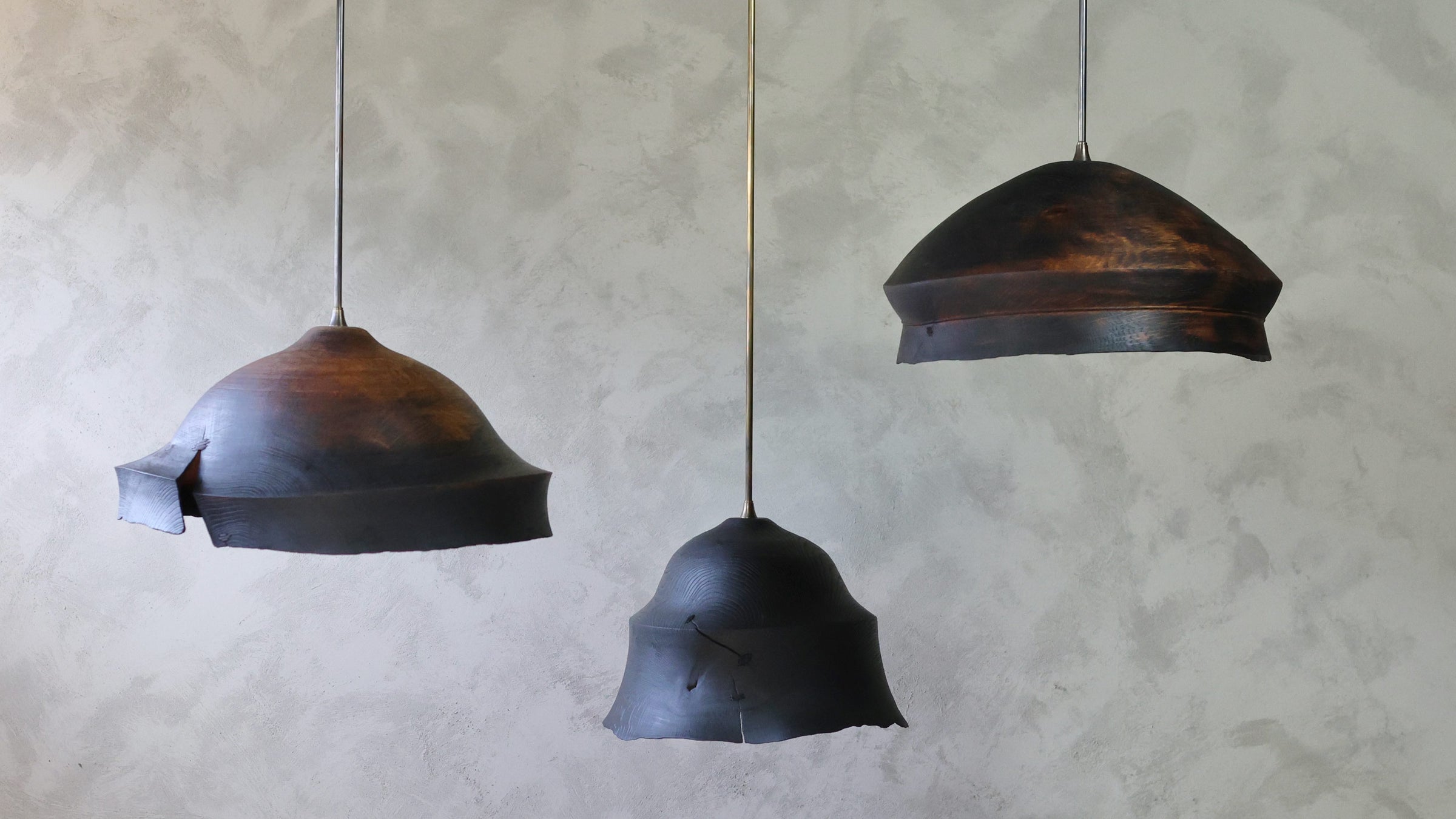
PROCESS

Are you 18 years old or older?
Sorry, the content of this store can't be seen by a younger audience. Come back when you're older.
The woodworking duo Ash & Plumb have collaborated with The New Craftsmen to produce the ‘Anticuus’ ceiling lights, designed in partnership with interior designer Louise East. The statement lathe-turned and stitched sculptural wooden pendants are to debut at our exhibition as part of London Design Festival, open from September 16th.
Ash & Plumb create work inherently linked to place, particularly around Sussex where their workshop is based. Here they source their materials, working predominantly with green Oak gleaned from trees that have fallen due to disease, decay or responsibly coppiced with a focus on timber unsuitable for commercial use.
The pendants draw inspiration from ancient British and European vessels, their fractured and eroded rims pushing green woodworking to its limits, while the decorative stitch detailing acts as a compelling material contrast. The result is a group of highly characterful and versatile lights which draw on and celebrate the natural beauty of the wood, bringing the outside into our homes.
These lights are available in 3 shapes and 3 finishes as standard. Each light comes with a brass stem which can be made at custom lengths.
Material: British Oak Bayam Abbey in Kent & dark brown cotton cord, brass stem, hand spun ceiling rose & bulb holder.
Dimensions:
cm: Width 57, Depth 53, Height 28cm
inches: Width 22.4in, Depth 20.8, Height 11in
Care Instructions: Dust or wipe with a damp, soft cloth. Handle with care.
Lead time: 10-12 weeks

This English Oak pendant from Ash & Plumb has been charred before finishing with a mixture of linseed oil and beeswax then finally burnished and stitched with a Black Waxed Cotton Cord.
Each form is turned from green Oak and allowed to air dry over several weeks, as the wood dries the natural tensions within the tree cause the forms to warp and often crack naturally before patination, oiling and stitching to highlight the natural beauty of the imperfections.










